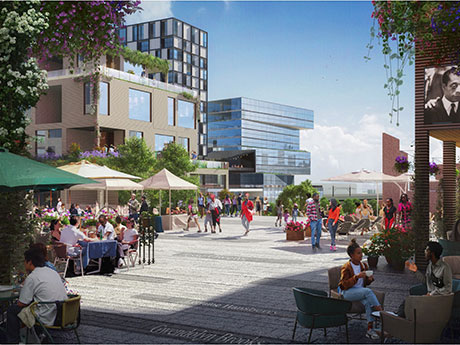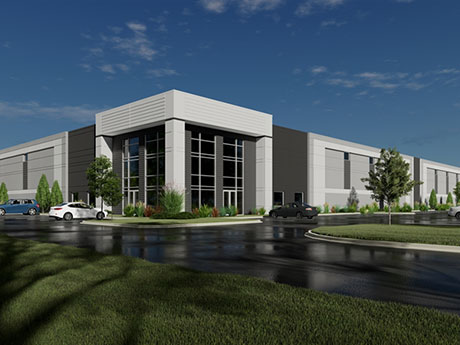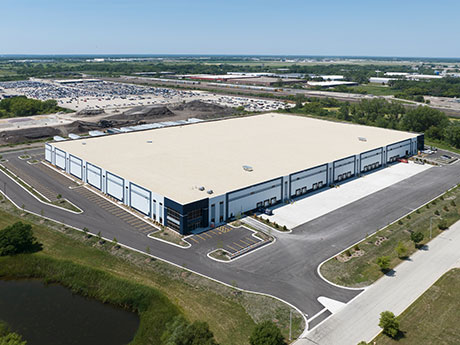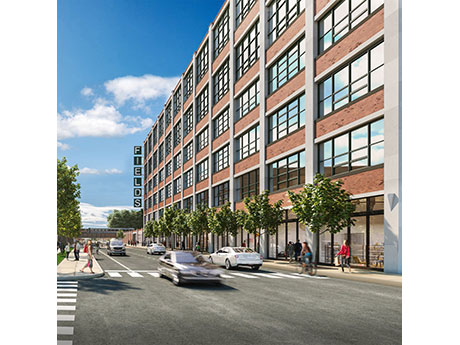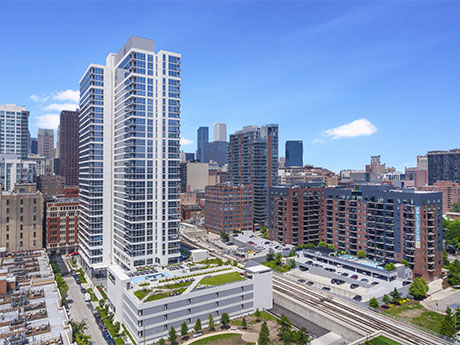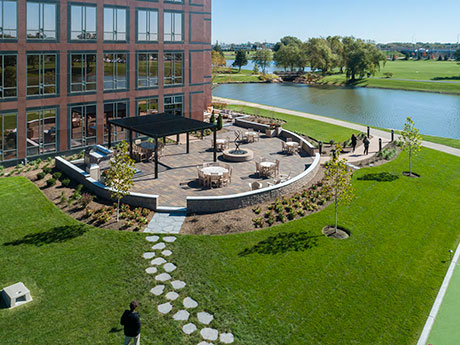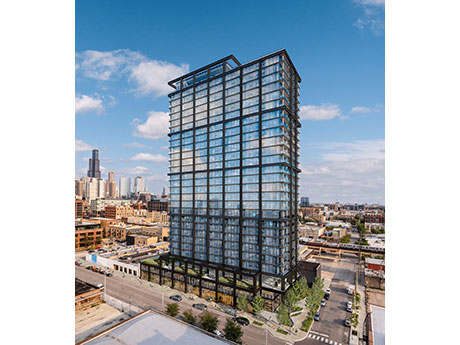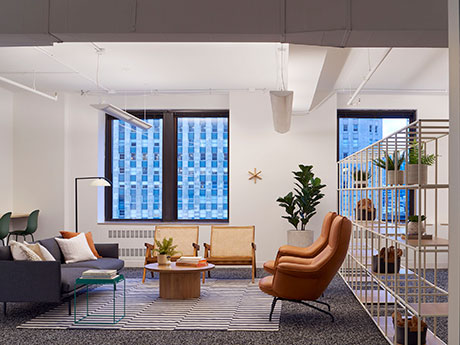By J. Byron Brazier Equitable development is a knotty concept. In theory, development equity sounds easy and essential. In practice, it’s not clearly defined and not easily sustainable — economically, socially or politically. Equitable development is generally seen as an approach that revitalizes and empowers disinvested communities by meeting residents’ wants and needs, diminishing disparities and spurring economic growth, ensuring residents benefit from such growth and creating conditions for people to live healthy and happy lives. That definition is accurate but incomplete. Equitable development has multiple meanings, some less intuitive than others. Chicago lawyer Danielle Meltzer Cassel says there are three ways to define development equity. The first is the one above, which is the direct model of equitable development. This model rectifies inequality through what development directly produces, such as affordable housing in areas where there’s little or no such housing, good jobs for people who are unemployed or underemployed, greater access to quality healthcare and education, and other resources that allow communities to thrive. There are two other definitions, the indirect model and what Cassel calls the procedural model of equitable development. The indirect model involves real estate developments that do not directly benefit disinvested communities, such as …
Market Reports
By Mike Mangan, Cresa We knew it would happen, it was just a matter of time: The industrial real estate market is currently experiencing a cooling trend in Chicago and across the country. The best-performing asset across all commercial asset classes for the past several years is finally coming back to earth due to higher borrowing costs and a slowdown in demand. Rental rates are beginning to level off and many economists are predicting a reduction in consumer spending. The industrial sector had been able to flourish despite economic headwinds, with demand during the pandemic heavily focused on e-commerce activity. The supply versus demand is shifting, and this should be welcome news to tenants in the market or who will be in the market in the next 12 to 24 months. Indicators are not pointing toward a crash landing, but a return to earth for the golden child of the commercial real estate asset classes. Tenants and occupiers will be able to utilize the additional supply coming to market to secure better economics and concessions. The facts Let’s first take a look at the national landscape. The U.S. unemployment rate in August was 3.8 percent — higher than predicted by …
By John Cassidy and Calvin Gunn, Lee & Associates If you love a good groundbreaking photo — full of shiny shovels, hard hats and smiling development teams — you may be disappointed this year, for all the best reasons. With Chicago’s most recent wave of speculative industrial projects currently being delivered, the market now actually has space to offer industrial tenants — a refreshing change from the past few years. With construction costs and interest rates continuing to rise and credit availability shrinking, many developers with ties to Chicago are pausing new projects as exit cap rates are becoming more difficult to predict. At the same time, market fundamentals are starting to cool from the pandemic-era eruption of demand. The good news: Chicago’s industrial market may be down from the clouds, but it’s still historically quite healthy. Vacancy rate in perspective According to Lee & Associates of Illinois’ second-quarter industrial snapshot, construction deliveries caused the Chicago industrial vacancy rate to tick upward for the second consecutive quarter. However, a 3.68 percent vacant market is still considered a historically low vacancy environment. As a comparison, that vacancy rate measured about 12 percent at the end of 2009 and 6.6 percent in …
By Jaime Bertsche and Lara Keene, Mid-America Real Estate Positive signs for retail real estate abound across many Chicago neighborhoods and high streets, with physical stores demonstrating their necessity coming out of the pandemic. Both of us live and work in the city of Chicago, so it’s particularly heartening to see favorable trends and leasing activity throughout our city of neighborhoods. It may surprise some to know that Chicago has been No. 1 in corporate expansions for the last nine years, with 441 major business expansions and relocations in 2021. Chicago employment has grown by 75,000 since the start of 2022 and ranks third in the U.S., according to World Business Chicago. Google is investing in the city and purchased the 17-story, 1.2 million-square-foot Thompson Center in the Loop with plans to use the building as a second Chicago headquarters. Kellogg announced it will move a spinoff company to Chicago for a new headquarters in the city. Some of the economic changes we saw in the market in the second half of last year affected retailers’ expansion plans. Inflation and interest rates challenged retailers to maintain their customer base, keep their own costs in line, and adapt to higher …
By Mark Stern, JLL Chicago’s multifamily sector currently enjoys strong market fundamentals highlighted by healthy occupancy rates and continued rental rate growth. The current core apartment rents average over $4 per square foot, which is higher than previous peak pricing. After the pandemic, rental rates between late 2021 to 2022 recorded 10 to 15 percent growth, which is substantially ahead of the historical norms. Currently, the Chicago rental market is experiencing more stable rent growth in the 3 to 4 percent range. Chicago remains one of the most affordable major markets to rent an apartment when looking at the current average effective rents as a percentage of median household income. This affordability will allow owners to continue to push rental rates in the future. One of the major factors leading to strong operating fundamentals in the Chicago market is the lack of new supply. The supply in Chicago is currently 1 percent of the inventory, which is quite low in comparison to other markets where there could be as much as 10 to 12 percent of the inventory under construction. In the city, there are just over 7,000 units under construction slated for delivery between 2023 and 2024. The majority …
By Mark Kolar, Cresa There’s been a lot of news recently about the financial pressures facing suburban Chicago commercial office landlords who have financed their office buildings via commercial mortgage-backed securities (CMBS) loans. While the financial challenges these buildings face continue to grab the headlines, there is a much less visible yet greater amount of privately funded commercial office landlords that could be facing dire financial changes over the next couple of years. These privately funded loans that originated through major banks and insurance companies are seeing just as much, if not more, stress than their CMBS counterparts. Collectively we’re seeing significant systemic issues for all Chicago commercial office landlords with no clear path to a solution in sight. In suburban Chicago, about 13 percent of commercial office loans are financed by CMBS loans with the majority of loan debt financed through local financial institutions, private investment funds and insurance companies. While details on these loans is not as readily available as their CMBS counterparts, many office landlords are confronting similar challenges. Both CMBS and privately funded commercial landlords and their lenders are facing a host of capital challenges that revolve around systemic changes in leasing activity, increasing costs of …
By Tyler Ziebel, Colliers Following one of the most active and aggressive periods in Chicago’s industrial capital markets history, 2022 ended as a year most market participants would rather forget. As the buying community returned to their desks and fastened their seatbelts for another year of fun in 2023, industrial sales brokers across the country are starting the year posed with a question from investors that hasn’t been asked in some time: “What are we going to be able to buy this year?” It’s easy to assume that investors will remain content to sit out of the turbulent market, but the answer to where we are, and aren’t, seeing liquidity requires a nuanced answer. In order to do that, we must take a quick look at 2022 and what set this uncertain market in motion. After several record-setting years for industrial leasing and sales in 2020 and 2021, accelerated by the COVID pandemic and a historically low interest rate environment, 2022 opened with the same frenzied pace and enthusiasm of 2021. But as the Federal Reserve pivoted its focus from keeping the economy stable to taming the resulting inflation, rapidly rising interest rates grounded institutional industrial transactions and development deals …
By Jennifer Hopkins, MBA and Olivia Czyzynski, SVN Chicago Commercial The commercial real estate (CRE) industry has traditionally been relatively stable but can be impacted by the economy with normal ups and downs based on economic fluctuations. However, when COVID-19 hit, it was unprecedented and something the world had not seen in many years. The CRE industry started preparing for the changes that came along, including business shutdowns and many employees working from home. Although it was expected that the retail market would be the hardest hit sector, it turned out that the office market ended up being significantly impacted. The overall issues and pending work-from-home approach have had a major ripple effect on office markets across the nation. The Chicagoland market was impacted particularly hard, and this included the suburban Chicago markets. Chicagoland is broken out into several main commercial hubs: the city of Chicago, the East-West Corridor, the O’Hare market, the Northwest suburbs and the North suburbs. According to CoStar, office vacancy rates increased in all these markets. In 2020, the vacancy rates ranged from 7 to 20 percent, but currently stand at 18.8 percent, 17.3 percent, 16.9 percent, 23.2 percent and 11 percent, respectively. While no market …
By Tyler Hague, Colliers A colleague of mine recently had to move out of her West Loop apartment quickly and she faced a conundrum: how much am I willing to pay for a one-bedroom apartment in Chicago? The unfortunate answer: not even close to the $2,700 per month rent she was continually being asked to pay. She ended up renting a studio. The average price for a one-bedroom apartment in the central business district is $2,478 per month, a figure that has grown 9.5 percent in the last year alone and equates to a $235.41 year-over-year rental increase, according to Yardi Matrix. It also translates to a national housing insecurity crisis, not just a local and presumed urbanized problem, and one that has been exacerbated by many of the detrimental housing laws and zoning regulations that exist in Chicago today. Whether it is aldermanic privilege, the Affordable Requirements Ordinance (ARO) or general NIMBYism, it is clear rent is too darn high — and it isn’t the entrepreneurial real estate professional’s doing but rather a major (and obvious) supply dilemma. This summer, for the first time in U.S. history, median rent costs in major cities surpassed $2,000 per month, according to …
By Ryan Foran, Cresa As we approach the three-year anniversary of the start of the pandemic, it continues to affect the commercial real estate industry in many ways, with no asset class impacted as significantly as the office sector. While retail initially stumbled but rebounded, and industrial soared to unexpected heights amid distribution emergencies, millions of U.S. office employees continue a tenuous balance of working from home versus going into the office. The pandemic wasn’t all bad news for office tenants. Many businesses with simple infrastructure and experienced staff have been so effective with remote set-ups that they have shed office space permanently and eliminated rent from the books. Others have embraced emerging technologies like virtual meetings and chat solutions to reduce the need for face-to-face interaction. In one way or another, most businesses were able to leverage this unique situation to improve their business processes, technology and personnel, and have embraced remote work at some level. But many businesses with younger, less experienced staff have reported ongoing struggles with recruiting, mentorship, culture development and staff retention. Some of these may have been amplified by complex external factors such as an ongoing labor shortage, an unprecedented resignation of our older …


